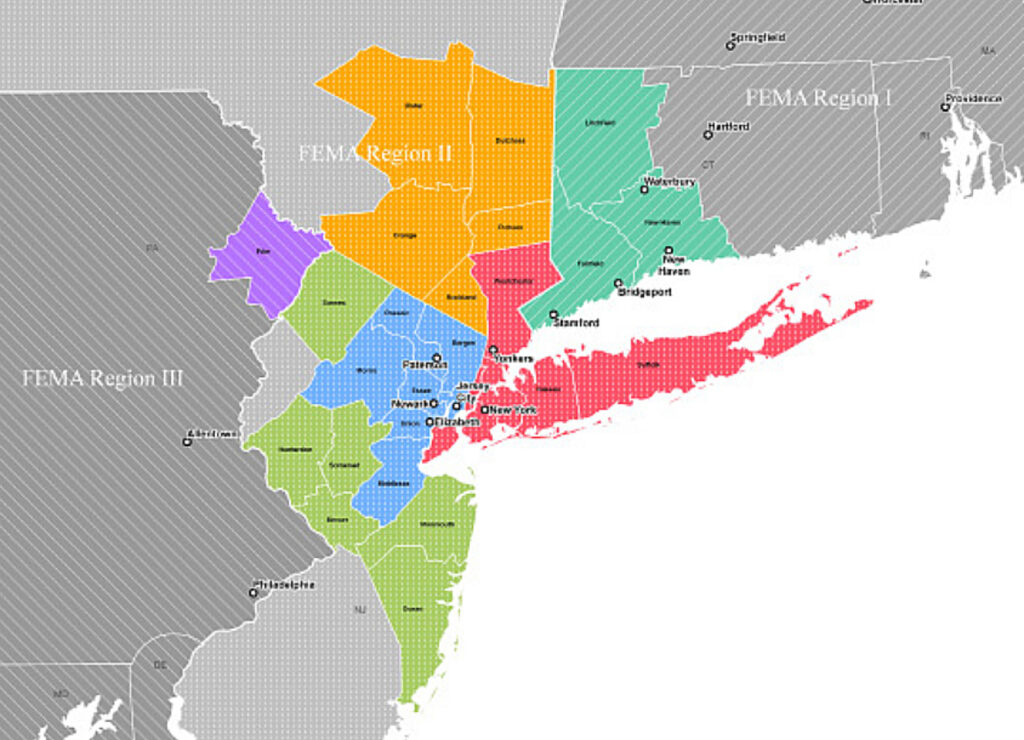| Project Type | Design Competition for Post-Disaster Provisional Housing |
| Project Phase | Planning |
| Location | New York City metropolitan area, USA |
| Date | 2008-present |
| Competition Sponsor | New York City Office of Emergency Management |
| Competition Partner | Architecture for Humanity-New York |
| Funder | The Rockefeller Foundation |
| Cost | $100 000 |
| Web Resource | www.whatifnyc.net |

The Living Modular project entry by PHOAM Architecture: Carsten Laurensen. Image: Morton Fassov , Carsten Laursen/PHOAM Architecture
How do you plan for a disaster that hasn’t happened yet? Who leads the reconstruction process and makes the crucial decisions of when, where and how to rebuild? Where does funding come from, and how long will it take? In search of answers, in 2008 the New York City Office of Emergency Management organized the What If New York City…Design Competition for Post-Disaster Provisional Housing. Prompted by the Ready New York emergency preparedness campaign, the competition called on designers to submit an innovative disaster housing recovery plan for a fictitious neighborhood in the event of a catastrophic hurricane. The winning project would be incorporated into an actual plan adopted by the New York City metropolitan area.

Map of the New York City metropolitan area emergency jurisdictions. Image: Regional Catastrophic Preparedness Grant Program/New York City Office of Emergency Management
Participants were asked to design housing that provided a higher quality of living than the temporary single-family trailers and other prefabricated, short-term living spaces that are often deployed during emergencies. A set of planning premises served as guiding principles, requiring the designers to consider various factors from New York City’s population density to its interest in placing residents in their former neighborhoods. Judging was based on 11 criteria from rapid deployment to sustainability.
The entries were directed by a detailed hurricane scenario for the imaginary “Prospect Shore” neighborhood. The scenario tracked 200 days of changing conditions after a destructive storm on three scales: the city, neighborhood, and several households. A pre-hurricane demographic profile listed numbers for families, children, elderly residents, unemployment, housing units and the type of housing, as well as commuting preferences. Detailed maps showed roads, buildings, parks, vacant lots and a shoreline.
The jury, headed by David J. Burney, commissioner of the city’s Department of Design and Construction, selected 10 winners. A technical advisory committee comprised of city officials and industry experts reviewed the chosen projects and gave recommendations on feasibility and practicality. The winners were then awarded a grant of $10 000 to further develop their ideas over three months. The refined entries are featured on the competition Websites. Some winning submissions were added to the catalog of housing strategies in New York City’s Housing Recovery Plan.
Since then, the Office of Emergency Management has developed a performance specification for urban interim housing with the Department of Design and Construction to enable the city to leverage the capacity of the private sector in deploying housing as well as the guidance for housing manufacturers and those planning urban temporary communities, the Urban Design Playbook for Post-Disaster Interim Neighborhoods, with the Department of City Planning. Finally it plans to create an urban interim housing prototype.
The competition also became a starting point for the Regional Catastrophic Planning Team for the New York Metropolitan area, which was established in 2008 by the Department of Homeland Security to encourage collaborative emergency planning. “What if we have thousands of people who are displaced,” says Cynthia Barton, the Disaster Housing Recovery Plan manager. “How are we going to house them in a way that keeps them close to home, and makes it possible to keep their jobs and rebuild their lives?”
The plan is structured like a how-to guide so that emergency managers know where resources are, who has authority over them, and how they can be quickly implemented in a way that does not hamper other rebuilding efforts. The team hopes this coordination will help New York City plan for implementing a housing recovery strategy if the kind of catastrophic disaster scenario contemplated by the the competition ever happened.


S.C.A.L.E. Project was designed to be delivered on tractor trailors. David Mans, Otto Ruano, Robert Wrazen/Epochcore Design Studio
The winning Threading Water project suggests building dwellings on barges. Image: Megan Casanega, Laura Garofalo, David Hill Henry Newell, Nelson Tang
“Catastrophic events require a new kind of planning.”
Joseph Bruno, commissioner, New York City Office of Emergency Management
















READ OR LEAVE A COMMENT